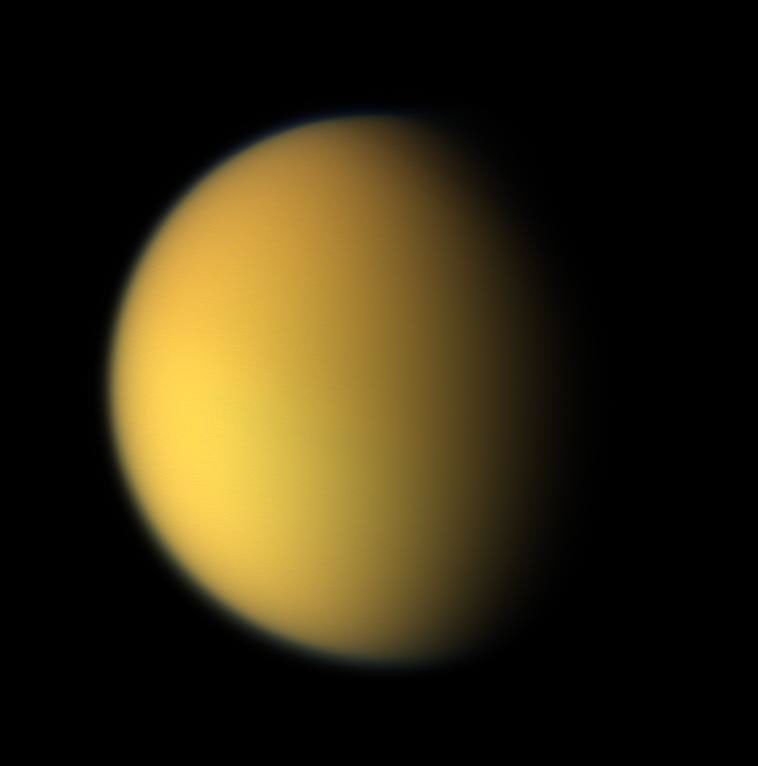Cassini’s View of Titan: Natural Color Composite
| PIA Number | PIA06230 |
|---|---|
| Language |
|
This natural color composite was taken during the Cassini spacecraft's April 16, 2005, flyby of
Titan. It is a combination of images taken through three filters that are sensitive to red, green
and violet light.
It shows approximately what Titan would look like to the human eye: a hazy orange globe
surrounded by a tenuous, bluish haze. The orange color is due to the hydrocarbon particles which
make up Titan's atmospheric haze. This obscuring haze was particularly frustrating for planetary
scientists following the NASA Voyager mission encounters in 1980-81. Fortunately, Cassini is
able to pierce Titan's veil at infrared wavelengths (see PIA06228).
North on Titan is up and tilted 30 degrees to the right.
The images to create this composite were taken with the Cassini spacecraft wide angle camera on
April 16, 2005, at distances ranging from approximately 173,000 to 168,200 kilometers (107,500
to 104,500 miles) from Titan and from a Sun-Titan-spacecraft, or phase, angle of 56 degrees.
Resolution in the images is approximately 10 kilometers (6 miles) per pixel.
The Cassini-Huygens mission is a cooperative project of NASA, the European Space Agency
and the Italian Space Agency. The Jet Propulsion Laboratory, a division of the California
Institute of Technology in Pasadena, manages the mission for NASA's Science Mission
Directorate, Washington, D.C. The Cassini orbiter and its two onboard cameras were designed,
developed and assembled at JPL. The imaging team is based at the Space Science Institute,
Boulder, Colo.
For more information about the Cassini-Huygens mission visit http://saturn.jpl.nasa.gov . For
additional images visit the Cassini imaging team homepage http://ciclops.org .
Credit: NASA/JPL/Space Science Institute

























